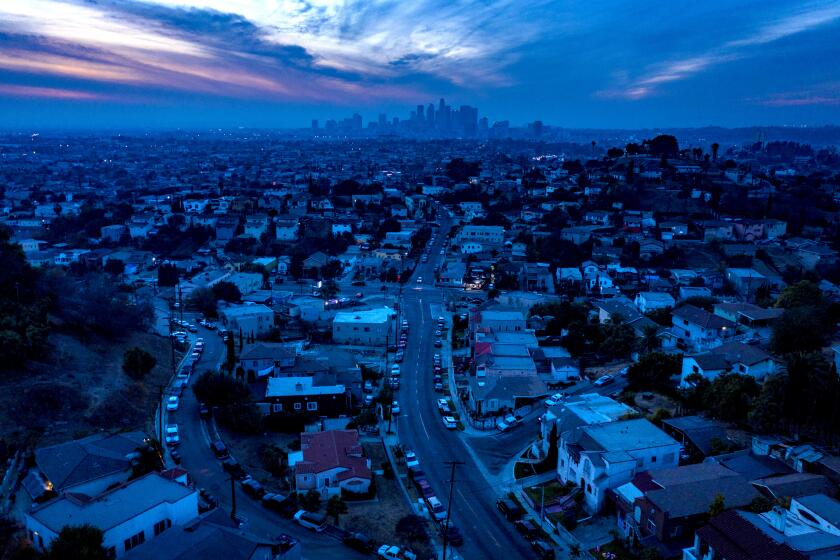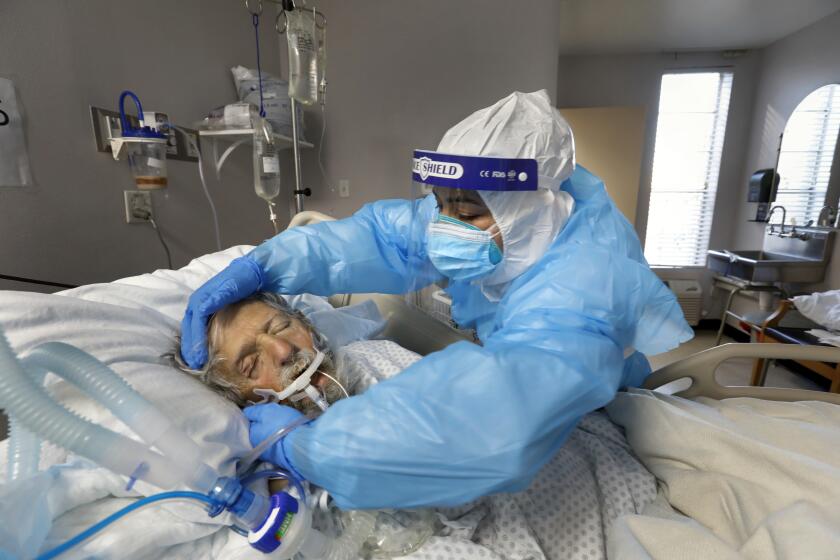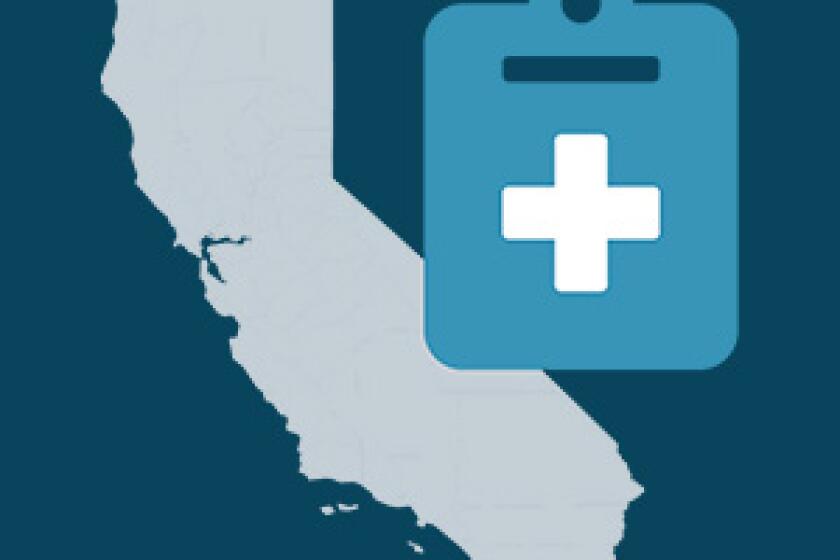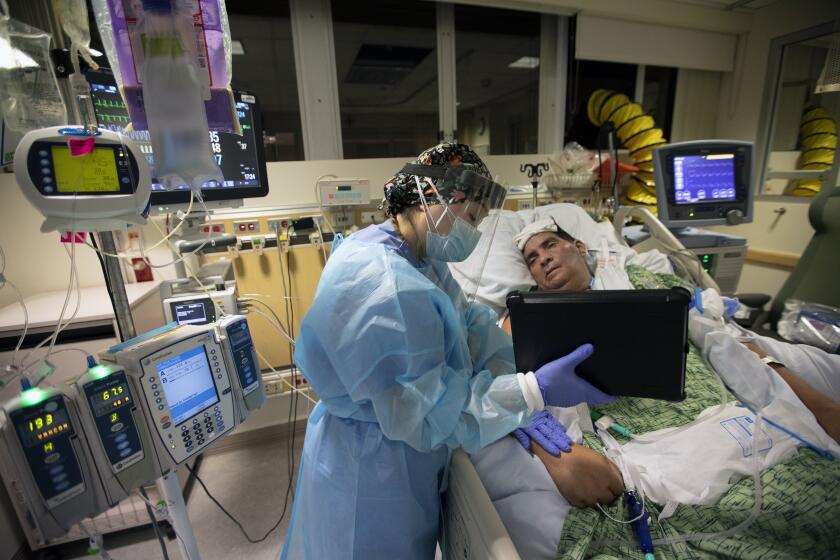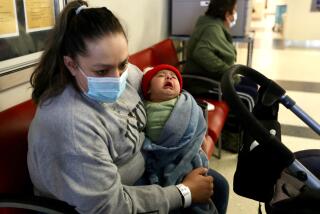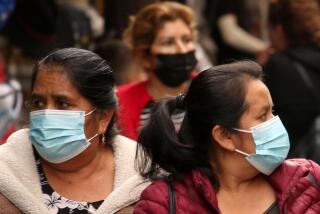‘Aren’t you going to help him?’ L.A. hospitals serving the poor and people of color hit hardest by COVID-19
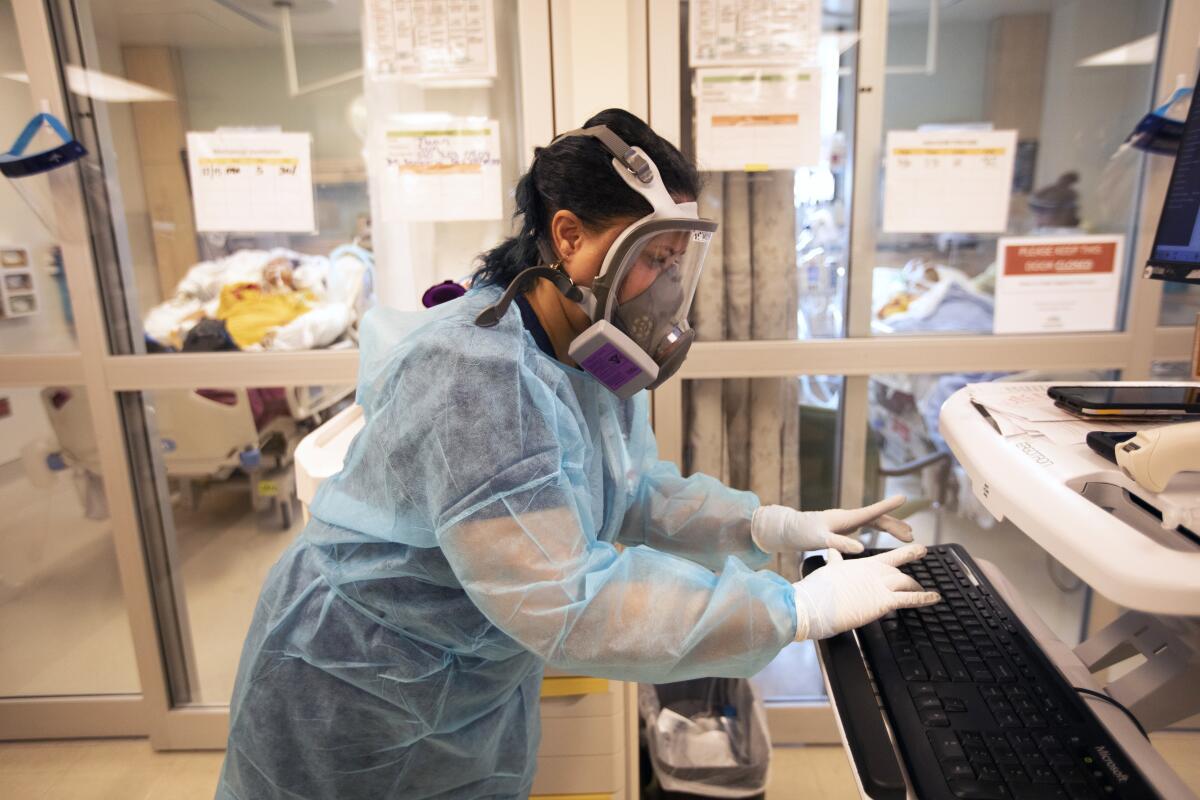
- Share via
As the pandemic besieges the region’s hospitals, its destructive sweep is being dispensed in unequal measures.
While all hospitals across Los Angeles County are being slammed by waves of COVID-19 patients, those in lower-income, densely populated and nonwhite communities have been hit hardest and face the greatest challenge in providing care, according to a Times data analysis.
Nearly every street corner holds some sign of the virus that has upturned lives, changing how the community mourns, learns, works and worships.
Hospitals in South Los Angeles, the cities in Southeast L.A. County along the 710 Freeway and in parts of the southern San Gabriel Valley are experiencing the greatest capacity problems, the data showed. Many of these facilities are relatively small and are less able to add intensive care staff or expand bed capacity than the county’s biggest hospitals.
The data underscores how communities of color have been disproportionately hit by the pandemic, with Latino and Black residents far more likely to get the virus and die of it compared with whites. Low-income essential workers often get sick while on the job and then spread COVID-19 to family, officials have said.
The data released by the U.S. Department of Health and Human Services shows that more than 6,000 patients with the coronavirus were hospitalized in L.A. County on average last week, nearly four times as many as a month ago, pushing the share of all admitted patients with the disease above 40%.
But it is much worse at some hospitals.
At Kaiser Permanente Downey Medical Center, more than 80% of the patients have or are suspected to have been infected with the virus, according to the data. Some new patients with the disease are being treated near the emergency department waiting area, in a triage room staffed with doctors, and some who are stable enough to leave are being sent home with oxygen.
Patients were “piled in administrative hallways, stuffed in the corners, hanging over chairs,” said one healthcare worker, who asked for anonymity out of fear of retribution. When the emergency room ran out of crevices, staffers began treating people right in the waiting room.
“It was like practicing Civil War medicine. It was the worst shift of my life,” the worker said.
Patients with low blood pressure and low oxygen levels were sitting in the waiting room for up to nine hours at a time.
“Family members were screaming, ‘He’s dying. Aren’t you going to help him?’” the healthcare worker said. “We looked at each other and said, ‘Are we gonna pull oxygen off of this lady to give it to someone else?’”
The situation is also alarming at Martin Luther King Jr. Community Hospital in Willowbrook, which has 131 beds and 128 COVID-19 patients. By Monday afternoon, the hospital had 215 patients and was going to declare an internal disaster, meaning it did not have the space or staff to take any more patients.
“If it continues to get worse, many hospitals will begin rationing care,” said Dr. Elaine Batchlor, the hospital’s chief executive. “It means we will have to make decisions about who to treat and who we may not have enough resources to treat. It’s horrible, it’s something that no health professional wants to contemplate.”
Batchlor said her hospital is so full because many of its patients are essential workers being put at risk every day, and they had pre-existing chronic diseases they’d struggled to get treatment for.
“Diabetic amputations and wounds are the No. 1 surgical procedure in normal conditions [at the hospital],” Batchlor said. “This has made our community here a setup for having a very difficult time with COVID, and it’s all playing out in real time as one might expect.”
Many of the patients are either publicly insured, through programs like Medicaid and Medicare, or are uninsured, and for this reason, larger hospitals will often decline to accept a transfer.
“I was surprised by the fact that we’re treating more COVID patients than hospitals three to four times our size,” Batchlor said after seeing the new federal data.
Once nurses enter the COVID-19 ward, they often feel as isolated as their patients.
But those larger hospitals have long been turning away low-income patients from South L.A. who need a higher level of care than the community hospital can provide, Batchlor said.
“This is how things usually work for us,” she said. “It’s just that COVID has really increased the stakes. It’s really a crisis, and we’re seeing the same pattern.”
Patients are being placed in every usable corner, including the gift shop, which instead of stuffed animals and greeting cards has patients on gurneys in need of emergency care.
The hospital’s intensive care unit is full, and staff converted its post-acute care surgery unit into more ICU space and has started boarding ICU patients in the emergency department. In some emergency department single rooms, they’re doubling and sometimes tripling patients.
Both Kaiser Downey and King have among the highest COVID-19 patient rates in the county, according to the government data.
That can be a key indicator for facilities, said hospital administrators, who also monitor the capacity of their ICUs. Several atop the list are from eastern or southern neighborhoods in the county. The list includes White Memorial Medical Center in Boyle Heights, East Los Angeles Doctors Hospital and Monterey Park Hospital.
The list of facilities with high COVID-19 share includes two other Kaiser Permanente facilities, which take patients who aren’t necessarily insured through the company. Its hospitals in the region have seen their share of COVID-19 patients increase from about 52% two weeks ago to more than 80%, said Bill Caswell, the company’s chief operating officer for Southern California.
“These tend to be communities where there is dense housing, for a variety of reasons, and where many of the individuals in the community are essential workers — so they have greater exposure,” said Nancy Gin, Kaiser’s regional medical director, who has worked to boost the company’s ICU capacity and find new ways to care for patients in their homes. “All of those factors play into why we have such a high rate of COVID.”
At County-USC, one of the nation’s largest public hospitals, officials had to stop taking new ambulance patients for 12 hours Sunday because the hospital was too jammed. If conditions continue to worsen, medical staff are likely going to have to make wrenching choices about who gets care.
“It’s difficult to reduce decisions about how to do the most good for the most people to a mathematical formula,” said Dr. Brad Spellberg, the hospital’s chief medical officer. “Right now, the decisions we’re making hour-to-hour are, how do we stay out of crisis care? How do we keep bailing water out, and try to raise the levee, so we don’t end up having to make triage-level care decisions?”
Even smaller hospitals in more far-flung areas are struggling to survive.
At Emanate Health Inter-Community Hospital in Covina, “the hospital is bursting at the seams,” said Tanya West, a nurse who has worked the past six years in the hospital’s emergency department.
There, oxygen levels are running low and multiple patients are being placed in single-occupancy rooms in the emergency department. “Staff can barely get by in the room to do treatments for patients,” she said.
Problems on Sunday caused at least five hospitals in L.A. County to declare an internal disaster, which closed the facilities to all ambulance traffic.
Ambulances with patients wait outside hoping to offload COVID-19 sufferers while other patients sit under canopies in the cold. The lobby is typically full.
The hospital had about 150 COVID-19 patients last week, including 22 in intensive care — more than 60% of all its patients — while also managing its normal load of other patients.
“We are seeing a huge surge of COVID patients, but yet we still receive a large amount of patients with typical emergencies, from heart attacks to broken legs,” West said. “Emergencies don’t stop.”
Times staff writers Melissa Gomez, Harriet Ryan, Rong-Gong Lin II and Alejandra Reyes-Velarde contributed to this report.
More to Read
Sign up for Essential California
The most important California stories and recommendations in your inbox every morning.
You may occasionally receive promotional content from the Los Angeles Times.
